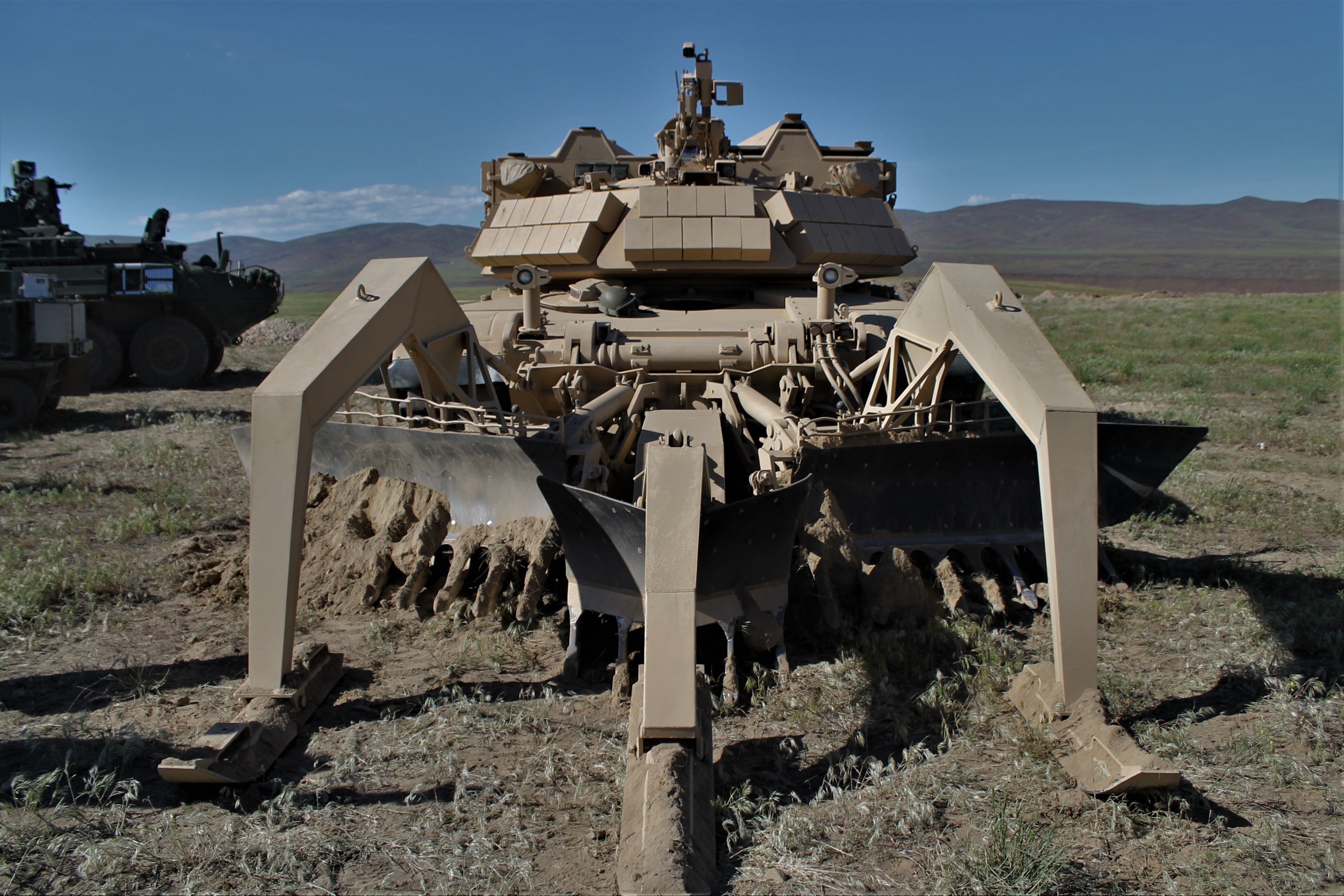WASHINGTON — The U.S. Army is close to triggering a competition for both a light and medium robotic combat vehicle by releasing a request for product proposals before the Thanksgiving holiday, according to Brig. Gen. Ross Coffman, the head of combat vehicle modernization for the service.
The plan is to award one contract to one company to build a light variant, and repeat the process for a medium-sized robotic combat vehicle, or RCV, in March 2020. Then each company will deliver four prototypes for evaluation and testing in 12 months from contract award, Coffman told Defense News in a recent interview..
The Army anticipates a large pool of applicants based on a recent evaluation of eight different vehicles on a course at Texas A&M University’s RELLIS campus, and because the response to a request for whitepapers for each variant was fruitful.
The caliber of vehicles at the physical demonstration was higher than expected. Companies “really took it seriously” and brought vehicles that weren’t just “modified, off-the-shelf” versions, Coffman said. Instead, the robots were “closer to purpose-built than we ever imagined,” he added.
The Army is focused — across all three weight classes of robotic vehicle under pursuit — on a chassis rather than a vehicle as a whole. The idea is to integrate mission systems onto a common chassis for each weight class.
On the heavyweight side, the Army completed a major experiment last month at Camp Grayling, Michigan, where four robotic versions of the M113 armored personnel carrier was evaluated for ground robotic capabilities. At the event, which will be followed by rigorous testing and evaluation at Aberdeen Proving Ground, Maryland, four robotic combat vehicles moved across the battlefield in a wedge formation. Soldiers controlled the platforms to keep them out of harm’s way.
RELATED

“They came online, identified an enemy and then the humans called for fire based on the sensors on this robot,” Coffman said. “And then, once the artillery went in, the robots continued to traverse the terrain and engaged with direct fire against an enemy, destroying that enemy, all while the humans were in sanctuary controlling the battlefield.”
The exercise demonstrated to Coffman that heavy RCVs can reduce the risk to soldiers on the battlefield.
Once Army Test and Evaluation Command can put each vehicle through its paces, the platforms will head to Fort Carson, Colorado, in March 2020. “We’re going to put these in the hands of soldiers and they’re going to — they’re going to get them dirty, they’re going to execute tactical operations and they are going to fight against a live [opposing force],” Coffman said. “They are going to take them to the gunnery, and we’re going to see all of the capabilities they can do.”
After that phase, the Army plans to evaluate four M113s as well as four medium and four light RCVs that will form a company and execute tactical formations as the Army builds up its capability, according to Coffman.
In 2023, the Army will evaluate purpose-built heavy variants with the medium and light RCVs also in a company formation, Coffman added.
Jen Judson is an award-winning journalist covering land warfare for Defense News. She has also worked for Politico and Inside Defense. She holds a Master of Science degree in journalism from Boston University and a Bachelor of Arts degree from Kenyon College.






